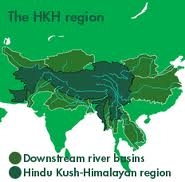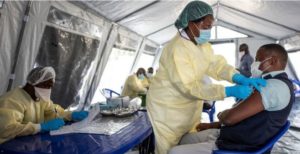ICIMOD Conference on Hindu Kush Himalayan Cryosphere

Kathmandu:The International Centre for Integrated Mountain Development (ICIMOD) held a groundbreaking international conference on Himalayan glaciers this week.
The gathering from 14 to 18 May, titled ‘Cryosphere of the Hindu Kush Himalayas’, was hosted at ICIMOD Headquarters in Kathmandu, Nepal, and brought top scholars and practitioners from across the globe together to discuss the most recent research on snow, glaciers, glacial hydrology, and capacity building in cryospheric research in the region.
“This conference was a unique opportunity for a wide variety of experts, students, and practitioners from around the world to share knowledge and learn from each other,” said David Molden, Director General of ICIMOD. “We are thrilled to host such an esteemed crowd in Kathmandu, and we are inspired by the spirit of collaboration that emerged from the proceedings.”
During the week-long conference, participants presented papers and posters on the state of scientific research in the Himalayan cryosphere and best practices for collecting, coordinating, and disseminating data. In addition, thematic discussion groups debated best practices for the creation of a cryosphere knowledge hub at ICIMOD, including data sharing policies and data dissemination. The conference concluded with a two-day workshop on data sharing in the region. “The purpose of this workshop is to get down to the practical matters as to how we’re going to share data,” explained Molden in his opening remarks to conference participants. “Everyone agrees that we need to share information, but the practicalities are complicated – that’s where ICIMOD can make a valuable regional contribution.”
The Hindu Kush Himalayan (HKH) region contains the world’s largest volume of permanent ice and permafrost outside of the poles. Monitoring of snow and glaciers of the HKH region is essential for understanding the effects of the current climate change and its impact on water resources, and has become a priority for ICIMOD.
“We are uniquely positioned to become a regional knowledge hub for cryosphere research,” said Molden, “bringing together people, information, methodologies, and data to improve scientific understanding and make sure that knowledge is put to use for the people of the Hindu Kush Himalayas.”
The objective of this international conference is to improve and coordinate cryosphere programmes in the region and better contribute to the understanding of water resources and their management. Topics presented and discussed at the conference included: glacier inventories, glacier mass balance monitoring, debris-covered glaciers, remotely sensed glaciological observations, snow, hydro-meteorological monitoring, and runoff modeling of glacierized catchments.
Eighty-five conference participants from 16 countries, including nine outside the HKH region, attended the conference, which was supported by the Norwegian Ministry of Foreign Affairs and the United States Department of State.
Regional cooperation on climate change, food security, and disaster risk reduction is connected to knowledge about the HKH cryosphere, which will be crucial to policy decisions in the future. “We understand that data sharing is not always easy, but it is important for the development of both the region and the state of knowledge on the Himalayan cryosphere. This is why ICIMOD has taken this initiative based on the confidence we’ve gained from our regional member countries and the international community,” said Pradeep Mool, Remote Sensing Specialist at ICIMOD.
ICIMOD’s goal in establishing a regional knowledge hub and comprehensive data sharing policy is to provide a standardized and accessible resource for scientists, policy makers, and the general public.
“Mountains, glaciers, and permafrost all cross international borders,” said Molden. “So do the issues of researching them and disseminating information about them. That’s what motivates ICIMOD’s work in developing a regional knowledge hub.”















